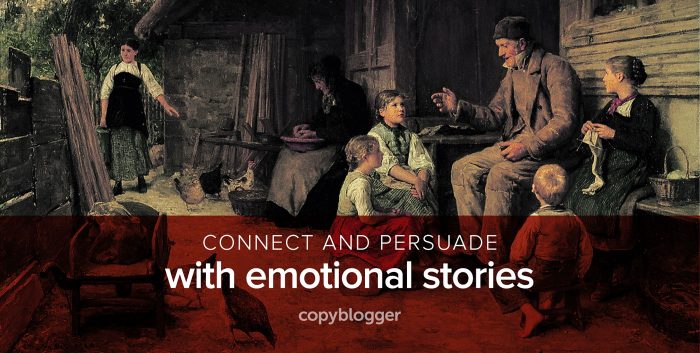
He’d been on the job just two short weeks.
Two weeks at the most prestigious publication in his industry, and he was already on the brink of bringing The Entire Machine to a halt. With a thud, not a screech.
With a Wednesday article deadline looming, on Monday morning he had nothing but the few beads of sweat forming on his brow. Those were something at least, so he didn’t wipe them away.
He procrastinated. He hopped from link to link, half-reading in between his worries … a mere 29 minutes from the conference call where he’d be asked by the top brass about the obviously gaping hole in this week’s schedule. Wednesday. Damn Wednesday.
His number was up. He was about to be found out. Then a headline caught his eye. And he knew it was the inspiration he’d been looking for …
The most indispensable lesson he’d ever learned about persuasion would save the day.
Stories persuade
Stories about dying, mothers, and fighting for your ideas.
Stories about snowboarding, subdural hematomas, and the secret of life.
Hell, even made-up stories about CEOs on ether trips shooting social media darlings with elephant tranquilizers.
They persuade in different ways and for different goals. But they persuade. And the storytelling doesn’t even have to be so blatant.
To grab your audience’s attention, you don’t need to use the third person and narrate neurotic work worries you once had. (Though you can, like I did above.) You don’t need to reveal your deepest, darkest secrets.
No, you just need to:
“Find ways to connect with your audience on an emotional level.”
Those are the words of Cliff Atkinson, author and communications consultant, from an article in the Wall Street Journal. Yes, even a publication known for numbers and news knows that when it comes to persuasion, stories succeed.
But not just any story.
So, how do you tell a good story?
You make sure you have the five elements that every great marketing story needs:
- A hero
- A goal
- An obstacle
- A mentor
- A moral
Number 4 is where you come in.
As Sonia Simone wrote, “You are the wise mentor who can provide essential information and tools that allow the hero to attain his goal.”
Weave yourself into your story as a wise mentor by demonstrating authority. Take your audience on a journey that solves their problems and satisfies their desires.
You can do this by sharing with your audience how you overcame an issue they might be facing.
You can do this by sharing special anecdotes from your own experiences that teach people universal lessons they feel warm and fuzzy learning and relearning, like this ode to a blue-collar genius.
And you can share the stories of others, like the man who rescued the family furniture business with nothing but a book and a killer work ethic.
And if you want to tell not just a story, but a remarkable story, add the following:
- Know your audience
- Select your frame
- Choose your premise
That means understanding the worldview of who you are talking to, then framing your story in a way that makes it resonate with your audience, and finally delivering the story — and its message — in the best way possible.
“Stories have been retold over and over throughout the ages — some are just better told than others.”
– Brian Clark
When you tell a good story, when you tell it better to an audience than anyone else, you earn the privilege of persuading them.
Tell your narrative with confidence and authority
Facts, figures, and PowerPoint presentations can’t do what a narrative can do.
Narrative conveys. It relates. It distills. Most importantly, narrative promotes understanding and cultivates connection.
Paul Smith, an associate director for Procter & Gamble’s market research, learned all about the power of storytelling …
As Dennis Nishi retells it in the WSJ, Smith spent three weeks assembling a PowerPoint presentation he was to give to Procter & Gamble CEO A.G. Lafley. But on the day of the presentation, Mr. Lafley never once looked at the slides.
He just watched Smith speak. The CEO of a multinational corporation didn’t care about slides. He cared about stories.
Which is why Mr. Smith now uses far more anecdotes in his presentations. Which is why Mr. Smith now has far more success selling his ideas.
So take it from him:
“Confidence and authority help to sell the idea to your audience.”
To develop your confidence, learn how to feel great naked.
To develop your authority, learn the time-tested methods that work from the people you trust.
And then the next time you inevitably get in a pinch … tell a story.
Not your facts and figures. Not your ideas. But your facts, figures, and ideas woven into a story that connects, solves, and satisfies.
After all these centuries, stories are still the most powerful way to persuade.
It’s a lesson that rescued me. And it might one day make you a hero.
Editor’s note: The original version of this post was published on November 13, 2013.
Image credit: Albert Anker [Public domain], via Wikimedia Commons
The post The Most Powerful Way to Persuade appeared first on Copyblogger.
No comments:
Post a Comment